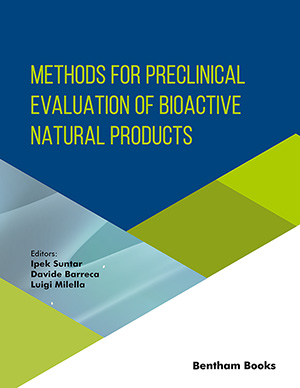Abstract
Background: This study investigated the role and potential mechanisms of Discoidin domain receptors-1 (DDR1) during liver fibrogenesis.
Methods: Blood and livers were collected from mice. In the in vitro experiments, human normal hepatocyte (LO2 cell line) and human hepatoma cells (HepG2 cell line) with overexpressed DDR1 (DDR1-OE) or DDR1 knockdown (DDR1-KD) were constructed by transfecting the corresponding lentivirus. Human hepatic stellate cells (LX2 cell line) were incubated with a conditioned medium (CM) of the above stable transfected cells treated with collagen. The cells and supernatants were collected for molecular and biochemical analyses.
Results: DDR1 expression was increased in hepatocytes from carbon tetrachloride (CCL4)-induced fibrotic livers compared to normal livers in wild-type (WT) mice. Liver fibrosis was relieved, and hepatic stellate cells (HSC) activation was decreased in CCL4-treated DDR1 knockout (DDR1-KO) mice compared with CCL4-treated WT mice. LX2 cells cultured in CM of LO2 DDR1-OE cells revealed increased α-smooth muscle actin (αSMA) and type I collagen (COL1) expressions and cell proliferation. Meanwhile, cell proliferation and the expression levels of αSMA and COL1 in LX2 cells cultured in CM of HepG2 DDR1-KD cells were decreased. Moreover, IL6, TNFα, and TGFβ1 in CM of DDR1-OE cells appeared to promote LX2 cell activation and proliferation, regulated by NF-κB and Akt pathways.
Conclusion: These results indicated that DDR1 in hepatocytes promoted HSC activation and proliferation and that paracrine factors IL6, TNFα, and TGFβ1 induced by DDR1 through activating NF-κB and Akt pathways may be the underlying mechanisms. Our study suggests that collagen-receptor DDR1 may be a potential therapeutic target for hepatic fibrosis.
Keywords: Liver fibrosis, Discoidin domain receptor 1, Hepatocyte, Hepatic stellate cell, Conditioned medium, α-smooth muscle actin.
[http://dx.doi.org/10.1111/liv.14390] [PMID: 31997561]
[http://dx.doi.org/10.1016/j.jhep.2018.09.014] [PMID: 30266282]
[http://dx.doi.org/10.1016/S0140-6736(21)01374-X] [PMID: 34543610]
[http://dx.doi.org/10.1126/scitranslmed.3004700] [PMID: 23303606]
[http://dx.doi.org/10.1016/j.bbamcr.2019.04.008] [PMID: 31004686]
[http://dx.doi.org/10.1016/j.bbapap.2012.10.014] [PMID: 23128141]
[http://dx.doi.org/10.1016/j.bbamcr.2019.03.005] [PMID: 30880148]
[http://dx.doi.org/10.1016/j.bbamcr.2019.06.010] [PMID: 31229648]
[http://dx.doi.org/10.1080/19336918.2018.1491495] [PMID: 29969346]
[http://dx.doi.org/10.1016/B978-0-12-800180-6.00002-5] [PMID: 24725424]
[http://dx.doi.org/10.1681/ASN.2006060677] [PMID: 17093065]
[http://dx.doi.org/10.1164/rccm.200603-333OC] [PMID: 16690978]
[http://dx.doi.org/10.1016/j.ajpath.2010.11.068] [PMID: 21356365]
[http://dx.doi.org/10.1159/000494790] [PMID: 30384360]
[http://dx.doi.org/10.4049/jimmunol.180.6.3990] [PMID: 18322208]
[http://dx.doi.org/10.1053/jhep.2002.32676] [PMID: 11981761]
[http://dx.doi.org/10.3390/cells10102759] [PMID: 34685739]
[http://dx.doi.org/10.1172/JCI93563] [PMID: 29293097]
[http://dx.doi.org/10.1056/NEJM200102083440604] [PMID: 11172178]
[http://dx.doi.org/10.1016/S0140-6736(12)61425-1] [PMID: 23234725]
[http://dx.doi.org/10.3181/0707-MR-190] [PMID: 18222966]
[http://dx.doi.org/10.1038/nrgastro.2017.38] [PMID: 28487545]
[http://dx.doi.org/10.1016/j.jhep.2020.07.041] [PMID: 32763266]
[http://dx.doi.org/10.1002/hep.30928] [PMID: 31505040]
[http://dx.doi.org/10.1016/j.intimp.2021.108051] [PMID: 34426110]
[http://dx.doi.org/10.1172/JCI24282] [PMID: 15690074]
[http://dx.doi.org/10.1371/journal.pone.0090571] [PMID: 25076423]
[http://dx.doi.org/10.1016/j.yexmp.2005.03.008] [PMID: 16332368]
[http://dx.doi.org/10.1016/j.ajpath.2011.03.023] [PMID: 21640971]
[http://dx.doi.org/10.1161/CIRCRESAHA.107.170662] [PMID: 18451340]
[http://dx.doi.org/10.4049/jimmunol.172.4.2332] [PMID: 14764702]
[http://dx.doi.org/10.3233/CBM-2005-1105] [PMID: 17192030]
[http://dx.doi.org/10.1016/j.matbio.2017.11.010] [PMID: 29196207]
[http://dx.doi.org/10.3390/cells8111419] [PMID: 31718044]
[http://dx.doi.org/10.1053/j.gastro.2008.04.038] [PMID: 18602923]
[http://dx.doi.org/10.1080/19336918.2018.1520556] [PMID: 30187813]
[http://dx.doi.org/10.1002/jnr.21552] [PMID: 17969104]
[http://dx.doi.org/10.1016/j.cellsig.2006.02.012] [PMID: 16626936]
[http://dx.doi.org/10.1186/s12967-018-1524-5] [PMID: 29859097]
[http://dx.doi.org/10.1016/j.biopha.2018.07.132] [PMID: 30119248]






























